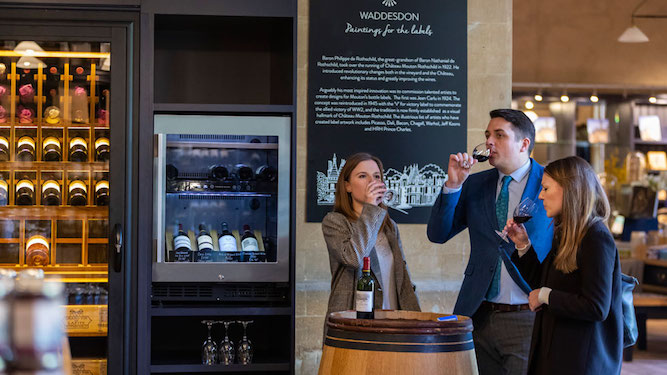
How to hold a wine tasting at home
Enjoy this step by step guide, complete with top tips and advice from our wine experts
Want to learn more about wine? Give this a try and learn everything from how to pick the wines to analysing them in five simple steps.
1. Choosing your wine
- Six to eight wines usually provide the best scope for comparison, though less than that would be fine too! Many more and your palate will become tired. We recommend buying half bottles (375ml) to keep costs down and avoid wastage.
- Ensure a broad spectrum of styles by including a sparkling, rosé, white and red in your line up
- Sampling a wide range of wines is always fun or try following a theme. For example, choose wines from the same region with different vintages to see how they vary, or choose a single varietal wine from two regions, to see how climate influences the wine produced.
- Top tip – cover the wine labels so you don’t know which is which. This will help you avoid being influenced by price or brand. Wine is subjective and value doesn’t always equal enjoyment!

2. Setting the scene
- Hold the tasting in a brightly lit room and provide everyone with a white mat (paper will do), for a neutral background to evaluate the colour of the wine.
- Avoid scented candles, aromatic flowers and perfume as they will compete with the wine’s aromas.
- Top tip – decanting red wines and chilling the whites for the correct amount of time will help show them at their best.
- Red wines: not all need to be decanted, often a few minutes in the glass is enough. If you do need to decant a red wine, pour slowly and leave roughly 3/4 inch of wine in the bottle. The correct temperature for serving is in the range of 15 to 18 °C.
- White wines: chill for the correct amount of time to ensure that the flavours appear at their best. Ideally, white wine is served in the range of 10 to 14 °C.
3. Serving the wine
- Start with the lightest wine and gradually move to the richest and most concentrated, low to high alcohol is usually a good key.
- Have some palate cleansers on hand to eat between wines, plain crackers or bread are ideal.
- Begin by pouring a few cm of wine into your glass – you want to be able to swirl it.
- Top tip – if serving red wine, use a large glass as this will allow the wine show off its aroma.

4. Tasting the wine
- Before you taste, use your other senses to analyse the wine – look at the colour first, it should be clear and bright. Then swirl the wine in your glass, to release aromas, and smell. The further away from the glass you can smell the wine dictates how aromatic the wine is (or how sensitive your nose is!)
- Take a small sip of wine and swirl it round your mouth for several seconds, then either swallow or spit out. To fully appreciate the wine, you should spit as alcohol numbs the palate, but we don’t blame you if you choose not to!

5. Analysing the wine – what can you taste?
- Aromas and flavours – can you identify a fruit group? For example citrus, stone or tropical. If there are citrus notes then go further, is it lemon, lime, grapefruit or something else?
- Texture and weight – is the wine light and crisp? Full bodied or delicate? Rough or smooth?
- Balance – does the wine have a smooth mixture of flavours or does one flavour dominate? Acid, alcohol, and tannins all provide structure to a wine and you should be able to taste them.
- The finish – how long does the wine stay on your palate? Does it linger or disappear the second you’ve swallowed? A good wine should linger and have a long finish.
Useful wine terminology
- Crisp/fresh – high acid
- Dry – low sugar
- Luscious – high sugar
- Full bodied – high alcohol/full flavoured
- Delicate – light bodied
- Creamy – rich and weighty
- Ripe – warm climate fruit with no hard edges
- Juicy – ripe fruit with low acidity
- Pronounced – bursting with aroma or flavour
- Intense – strong flavours
- Complex – layers of different characteristics on nose and palate
Discover more wine terminology>
We hope we’ve inspired you to hold a wine tasting at home! Make it a truly memorable occasion by trying some fine Rothschild wines.






